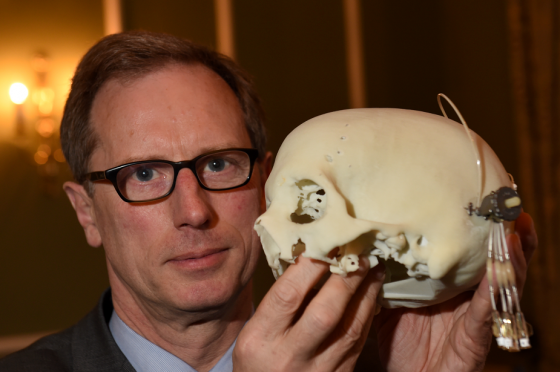A top brain surgeon visited Aberdeen yesterday to draw on the expertise of oil and gas experts to help him better treat his patients.
Bristol-based neurosurgeon Professor Steven Gill met with experts from BP North Sea, Westerton UK, Precision Oil Tools, Axis Well Technology and Well-Sense Technology in an effort to improve how medics safely drill into skulls.
He discussed what lessons can be learned from oil excavation techniques that can be applied to brain surgery for the treatment of conditions such as Alzheimer’s and Parkinson’s.
Prof Gill – who in his youth worked offshore from Aberdeen in his gap years of studying medicine – developed the convection-enhanced delivery system (CED) – a method in which drugs are infused directly into patient’s brains through tiny holes bored through their skulls.
He said: “I had a chance conversation with a few oil and gas engineers while I was attending one of the charity’s fundraising nights held at Thainstone House Hotel last year.
“If you imagine an oil drilling rig, it’s drilling a hole and delivering pipes deep into the earth to then extract oil.
“But hen you hit oil it refluxes and gushes up the outside of the tube, so they have developed special ways of sealing the tubes, and we have to do the same.
“If you’re drilling from a platform floating on the sea, you’re basically aiming at a moving target, and we also have a moving target as the brain moves about under the skull – we have the exact same problems but on a different scale.
“A lot of the troubles I’ve been struggling with, many in the oil industry have the solutions for, so today was extremely useful and very successful.
“Many of the experts have already come forward with many suggestions and solutions, so we’re going to keep talking and working on this into the future.”
Early next year, Prof Gill and his team will commence work on a clinical trial treating children with rare brain tumours, for which there is currently no cure.
The trial is being financed by an online crowdfunding initiative, to learn more about the project or to donate visit www.fundingneuro.com
